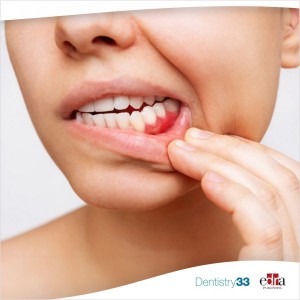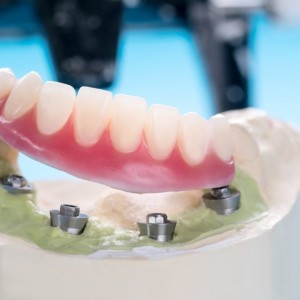
Effects of local simvastatin in periodontal maintenance treatment
Lara Figini
Object of the study
Periodontal maintenance therapy (PMT) includes the removal of bacterial plaque and calculus from the supragingival and subgingival areas through mechanical and selective root planing treatment RP.
Several literature studies have found that patients undergoing regular PMT show a lower incidence of periodontal problems and keep their teeth longer than those who do not follow a regular periodontal maintenance protocol. To treat residual pockets that are inflamed or progressing during PMT, adjunctive therapies have been developed to further reduce bacterial burden, inflammation, PD pocket depth and improve clinical attachment levels (CAL).
Additional therapies for traditional PMT include the local administration of anti-inflammatories or growth factors, and simvastatin. Simvastatin (SIM) is a specific competitive inhibitor of 3-hydroxy-2-methylglutaryl coenzyme A reductase. It was originally developed to reduce serum cholesterol but has been shown to also have anti-inflammatory and bone anabolic properties.
The application of statins, as demonstrated by various human clinical studies during initial periodontal therapy, can reduce the PD of the periodontal pocket, reduce clinical attachment loss and reduce inflammation. However, further research is needed to investigate the effects of SIM when applied to residual pockets in patients who have already undergone initial therapy and are receiving PMT.
Type of research and methods of analysis
In a double-blind, randomized, controlled study published in the Journal of Periodontology in July 2022, the authors investigated whether local application of SIM, in combination with minimally invasive treatment of papilla reversal and planing (PR/RP), may be effective for improving the clinical attachment level (CAL), for reducing probing depth (PD) and for obtaining an increase in interproximal bone height (IBH) in patients undergoing PMT with persistent periodontal pockets of 6-9 mm.
Fifty patients with stage III and grade B periodontitis with interproximal PD of 6-9 mm and bleeding on probing (BOP) were included in the study. Patients were randomly assigned to the experimental group [PR/RP+SIM/methylcellulose (MCL); n = 27] or control group (PR/RP+MCL; n = 23).
The root surfaces were accessed via reflection of interproximal papillae, followed by RP assisted with endoscope evaluation, acid etching, and SIM/MCL or MCL application. CAL, PD, BOP, plaque presence, and IBH (using standardized vertical bitewing radiographs) were evaluated at baseline and 12 months.
Measurements were compared by group and time using Chi-square, Wilcoxon rank-sum, and t-tests.
Results
Results obtained at the baseline time and at 12 months respectively for the PR/RP+SIM/MCL and PR/RP+MCL treatments: CAL: -1.9 ± 0.3 mm, p < 0.0001; -1.0 ± 0.3mm, p<0.003; PD: -2.3 mm ± 0.3, p < 0.0001; -1.3 mm ± 0.3, p < 0.0001; Bop: -58.7%; -41.7%, p < 0.05 and stable IBH (-0.2 ± 0.12, -0.4 ± 0.2, p = 0.22). PR/RP+SIM/MCL had greater improvements for CAL (p = 0.03), PD (p = 0.007), and BOP (p = 0.047).
Conclusions
From the data of this study, the researchers concluded that the addition of SIM/MCL to PR/RP improved CAL, PD and BOP, compared with PR/RP alone in periodontal maintenance patients.
Clinical implications
Dentists should take into consideration that the addition of local simvastatin can significantly improve periodontal parameters and can be useful as a support in periodontal maintenance therapies. However, further research should be conducted on the anti-inflammatory and antimicrobial effects of SIM, and on the long-term clinical effects.
Amy C. Killeen, Lauren E. Krell, Mattie Bertels, Mary M. Christiansen, Laura Anderson, Robin L. Hattervig, Kaeli K. Samson, Dong Wang, Richard A. Reinhardt. “Effect of locally applied simvastatin on clinical attachment level and alveolar bone in periodontal maintenance patients: A randomized clinical trial.” J Periodontol. 2022 Nov; 93(11):1682-1690. doi: 10.1002/JPER.21-0708. Epub 2022 Jul 12.
 Related articles
Related articles
Silencing a receptor in prostaglandins reduces pain but allows inflammation to run its course in animal and cellular studies.
Research led by George Hajishengallis of Penn Dental sheds light on an aging-related condition that drives inflammation in older populations.
Oral Hygiene & Prevention 14 September 2023
Bypass gastroplasty impacts oral health, salivary inflammatory biomarkers, and microbiota
The aim was to prospectively evaluate oral health status, salivary inflammatory markers and microbiota in patients undergoing gastroplasty compared with a control group undergoing a dietary program.
 Read more
Read more
Prosthodontics 17 November 2025
The purpose of this report is to describe a new technique to fabricate and deliver an implant-supported fixed prosthesis to the patient on the day of surgery, and to propose a protocol for the...
Editorials 17 November 2025
The Langkamp Allison Award recognizes a Pitt Dental Medicine third-year dental student interested in pursuing a career in dental education.
Products 17 November 2025
VELMENI today unveiled VELMENI Voice, an AI-driven voice recognition tool designed to transform periodontal charting and clinical documentation.
News 17 November 2025
Angelalign Technology Inc. (6699.HK) (“Angel”) recently announced the expansion of its flexible iOrtho platform to include direct integration with the Dexis, Shining 3D, and Panda scanners.
News 17 November 2025
Following the first FDA clearance for technology that measures internal mobility in teeth, Perimetrics CEO and Chairman Robert Hayman is once again leading dentistry into a new era with InnerView, a...














